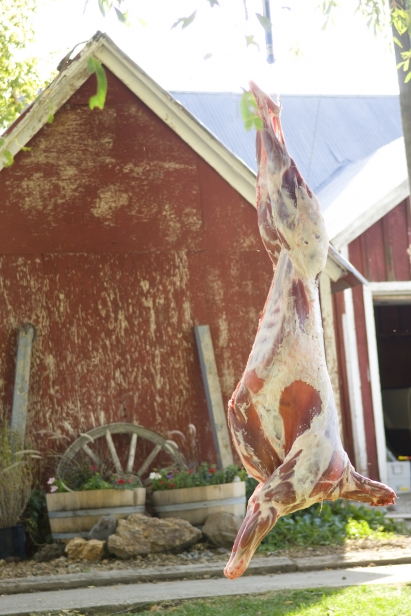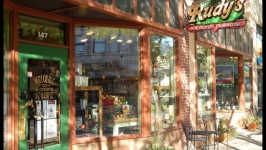Where Conservation and Farming Meet
Lava Lake Land & Livestock is some kind of beautiful. It’s the quintessential Idaho ranch, with sunlight and shadow playing over the changing colors of the hilly and peaked landscape. It’s no wonder Kathleen and Brian Bean bought the ranch 15 years ago with the idea of protecting it.
Lava Lake sits along the historic Oregon Trail in the Pioneer Mountains of South Central Idaho. The closest town is Carey. There, along with the stunning panoramas, the ranch raises grass-fed lamb while protecting the land. It’s a dual mission.
“It’s very exciting,” Brian Bean said of their decade and a half run. “We got into this because we love this country. Then we added the food business as a by-product. We fell in love with the sheep. Now it’s fantastic. We focus on conservation while developing a business that supports that conservation work.”
One hundred percent of the profits from the sale of Lava Lake lamb helps fund the Bean’s conservation work through the non-profit Lava Lake Institute for Science and Conservation. The Institute works on various research and conservation projects including outreach for students, scientists and natural resource professionals.
The ranch itself is 60,000 acres of certified organic land, which is just one piece of nearly 900,000 aggregate acres that includes deeded property, Bureau of Land Management federal land, National Forest land in the Sawtooth National Forest and Salmon-Challis Forest, as well as State of Idaho leases and other private leases. This is represented in the extreme ecological diversity, which the sheep graze from the ranch pastures at about 3,000 feet above sea level and sagebrush steppe to about 12,000 feet in the alpine tundra of the Lost River drainage far north of Ketchum.
In fact, in 2001 the Beans permanently protected 7,500 acres of private land by putting it under a conservation easement held by The Nature Conservancy — the largest donated conservation easement in Idaho history. Since then Lava Lake has undertaken a program for permanent conservation of its deeded lands. There have been seven other partial or full conservation easements to other land-based organizations since then with three more in progress.
“We found we could have an impact on landscape conservation.
We purchased sheep ranches initially because it allowed us to control grazing and drainages all the way up to the headwaters,” Bean said.
The vision of Lava Lake, so named because of its proximity to lava-created Craters of the Moon National Monument, is to continue the landscape-scale conservation for the benefit of all. With that in mind, they produce a very high quality product that is grass-fed and has both environmental and health benefits.
“If we can create a healthy product that’s tasteful and doesn’t have the petrochemicals that you find in industrial feedlot animals,” Bean said, then it’s a success.
There is plentiful evidence that grass-fed meat is a healthy choice due to its richness in Omega-3 fatty acids, vitamins E and A, and the highest concentration of conjugated linoleic acid (CLA) of all meats, poultry and fish. In this way, grass-fed animals do the heavy lifting for us humans. They’re able to convert the grass and other foraged plant life into fat-soluble vitamins making the meat extremely nutrient available.
Lambs, born in the winter, graze and grow on the ranch until they are about a year old and full-grown. The journey each summer to forage through the different microclimates is based on range timing, said Jen Douglas, Lava Lake business manager. “It’s adjusted to what Mother Nature gives. They’re following the green. What they’re eating is at its peak. That’s what makes this lamb so good. Grass plus the bounty of what’s available in the wild.”
Douglas works out of the Lava Lake office in Hailey that she shares with Amy Marvin, the sales and marketing coordinator.
“Eating grass-fed meat that’s high quality, and in reasonable portions, is very good for you,” Douglas said. “We believe in local food, and being able to buy good food.”
Marvin agreed. “We have no feed lot, use no antibiotics or hormones. It’s just more sustainable as a cut of meat.”
They practice what they preach when they talk about their landscape-scale conservation. This theory takes a holistic approach to the land encompassing local economies and agriculture, and the health and social benefits of the environment. Although the company sells lamb to Idaho restaurants, stores and on the Lava Lake website, they also sell coast to coast. “You can find our lamb from Southampton, N.Y. to fine restaurants in Portland Oregon,” Bean said. “We see almost unlimited future demands for a product as good as this,” he said.
Lava Lake Land & Livestock
Lava Lake Institute for Science and Conservation
Craters of the Moon National Monument







